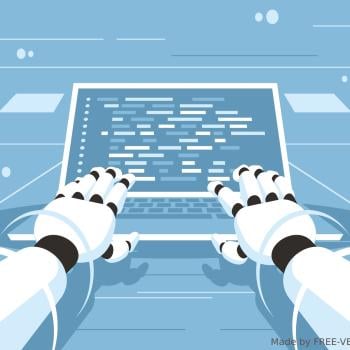Sparse coding technology has long been an important tool in neuroscience research, allowing scientists to quantitatively determine how optical information is represented by neurons in the brain. Dartmouth researchers have recently extended its use to the field of quantitative art authentication, or stylometry.
By using sparse coding technology to mathematically analyze and compare drawings by famed Flemish artist Pieter Bruegel with a known set of imitations, the researchers were able to distinguish between the genuine works and the forgeries. James Hughes, Daniel Graham, and Daniel Rockmore in the computer science and math departments describe their findings in the paper, “Quantification of artistic style through sparse coding analysis in the drawings of Pieter Bruegel the Elder” recently published in the Proceeding of the National Academy of Sciences.
Sparse coding technology was developed to emulate the human visual system. To translate the complex images first detected by eyes to the simpler models found in the brain, our visual system uses a number of “filter” neurons. These neurons are triggered by specific patterns in the image. The brain has evolved to efficiently identify many predictable patterns found throughout the natural world and is consequently able to minimize the number of filters required per natural image. Conversely, the brain requires many more filters to model images that it has not been previously exposed to.
Hughes, Graham, and Rockmore applied these ideas to their own art authentication technology. Essentially, they imagined a visual system that had evolved while being exposed only to Bruegel drawings. Thus, it would process Bruegel drawings using few filters but would have to use many more when looking at anything else—including Bruegel forgeries.
To create this model the researchers obtained a number of genuine and fake Bruegel drawings. They digitally broke the authentic works up into smaller pieces and using sparse coding technology identified the smallest or “sparsest” set of those pieces that could be used as filters. This set of filters essentially quantified Bruegel’s unique artistic style by capturing properties repeated throughout the artist’s works.
via DUJS Online » Dartmouth researchers spot art forgeries using sparse coding technology.
Good invention! It might not catch all forgeries, though. A problem in the modern art market is how to detect a genuine Jackson Pollock, whose major works consist of random spills of paint on canvas. Forgeries have come on the market that were made in exactly the same way and so look essentially the same. A genuine Pollock is worth hundreds of thousands of dollars. A fake Pollock is worthless. But how to tell them apart?
There actually is a way to tell sometimes.
This account of the Pollock forgery below describes how the fake painting was found to contain paint compounds that did not exist until after the artist’s death.

The work on the left is a fake; the one on the right is genuine.
Why does it matter? If a fake Rembrandt looks as good as a real one, why can’t we just enjoy it anyway? (There is an answer to that.)
HT: Joe Carter











